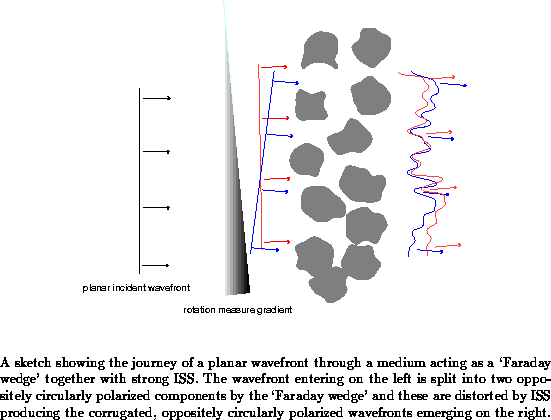
The very small degree of circular polarization of some extragalactic radio sources may be due to scintillations in the interplanetary plasma, according to a study by Jean-Pierre Macquart and Don Melrose.
The circular polarization of extragalactic radio sources is quite low and is difficult to measure. However, it has been known for about two decades that some flat-spectrum sources have significant circular polarization at the level of a few tenths of a percent, and that this polarization can exhibit unexplained variations in both frequency and time. More recently, observations with the Australia Telescope have confirmed these features. In particular, Lucyna Kedziora-Chudczer has found that the spectacularly variable source PKS 0405-385 exhibits circular polarization that varies on a time scale similar to that of the total intensity, but in a way that is not obviously correlated with either the total intensity or the linear polarization. The favored interpretation for the variability of PKS 0405-385 is in terms of interstellar scintillations (ISS). This leads to the suggestion that the circular polarization may be associated with ISS.
Jean-Pierre Macquart and Don Melrose, following a suggestion by Mark Walker, are exploring a model based on what they call a Faraday wedge. The idea is that the interstellar medium is birefringent, and hence analogous to a birefringent crystal in the sense that on looking through it one can see two separate images of a single source. In a birefringent crystal the two images are orthogonally linearly polarized, and in a birefringent plasma the two images are oppositely circularly polarized due to the Faraday effect. The angular separation between the oppositely polarized rays emerging from a slab of plasma with a gradient perpendicular to the line of sight (a `Faraday wedge') is tiny, but after propagation over a distance of several kiloparsecs, it can lead to two well-separated images. Strong ISS produce multiple images, and when coupled with the effect of a Faraday wedge a simple model predicts many partially overlapping, oppositely circularly polarized images. The variations in the circular polarization are then attributed to this pattern being swept across the image plane due to the relative motion between the Earth and the scattering centers.
